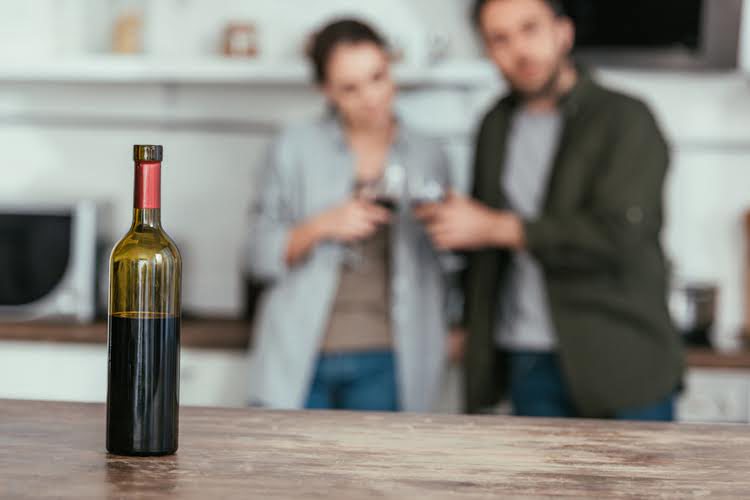If you’re in recovery from a substance use disorder, you already know how much work it took to achieve sobriety, and you’ll want to do everything possible to avoid having a relapse. It may seem that relapse is the https://virginiadigest.com/top-5-advantages-of-staying-in-a-sober-living-house/ last thing that could happen to you, but the truth is they are very common for people new to recovery. Information about NIMH, research results, summaries of scientific meetings, and mental health resources.
More than a million Americans have died from overdoses during the opioid epidemic
Warning signs of recurrence often precede triggers.366,367 These warning signs can be categorized as emotional, mental, and behavioral.368 Being aware of these warning signs can help counselors identify when clients in recovery may need more support. SUD service delivery in mainstream health care can be cost effective and may reduce intake/treatment wait times at SUD treatment facilities. Evidence suggests a strong connection between the experience of trauma and problematic substance use.125 Clients with a history of problematic substance use may also have a history of trauma that is connected to this use, even though they may not be able to recall aspects of their trauma. Chapter 3 provides guidance about trauma-informed care approaches that can help guide work with these clients.

Develop and share clear and supportive workplace policies
- Use these free education and outreach materials in your community and on social media to spread the word about mental health and related topics.
- Therapy may be critical to resolving underlying problems that made escape into substance use so appealing in the first place.
- A ROSC’s overarching goal is to better support people in achieving recovery, wellness, and improved quality of life by addressing their needs holistically397 and in the same long-term way that characterizes management of other chronic diseases, like diabetes and heart disease.
- We considered that to be sufficient to answer the research question about how the informants perceived and reflected on the recovery process after they were discharged from inpatient treatment; hence data saturation had been achieved [20, 24].
Researchers say this data — and this lived experience — contradicts a widespread misperception that substance-use disorder is a permanent affliction and often fatal. But in a pattern researchers say is common, Mable-Jones’ illness eventually eased. She found treatment that worked and has lived drug-free for more than 20 years.

Screening, Brief Intervention, and Referral to Treatment
Level III homes often have staff present in the home who might provide clinical services and administrators who coordinate other services. Level IV homes are usually state-licensed and, as such, have licensed clinical services, are connected to state-funded services, and may be housed within a larger state-level institution. Which aspects of recovery residences (e.g., social support, linkages to mutual-help programs) have the greatest impact.
Does relapse to drug use mean treatment has failed?
- Counselors may have legal, ethical, or programmatic considerations that prevent them from working on substance use or recovery issues with clients who have nonabstinence recovery goals,345 perhaps based on type of substance.
- Stopping drug use is just one part of a long and complex recovery process.
- Estimates from the 2021 NSDUH should not be compared with estimates from previous years because the COVID-19 pandemic necessitated methodological changes to the data collection process.
- Empowerment is another necessary mechanism of change; in psychological parlance it’s known as self-efficacy.
- “That 75% number [of people who achieve remission] includes obviously people at the more severe end of the spectrum,” said Dr. David Eddie, who co-authored the study on recovery success and also teaches at Harvard Medical School.
The Lifeline also accepts chats via 988lifeline.org/chat/.243 Counselors should make sure their clients are aware of the 988 Lifeline and the availability of 24/7 services in their community. The key to understanding SUDs and many other medical puzzles will likely be not one gene but many, each of which makes a small contribution to the relative risk of developing a condition, or the ability to resist developing it. The advent of “big data”—genomic databases that also include detailed information on the owners of the DNA—has enabled genome-wide association studies (GWAS)107 that attempt to make these complex connections. Researchers can study which widely scattered genes contribute to substance use and the patterns of polysubstance use, and possible explanations for the observed linkages between SUDs and mental disorders like depression and schizophrenia.
Estimating the Number of People “In Recovery”
Some recovery houses are connected with affiliates of the National Alliance of Recovery Residences, a non-profit organization that serves 25 regional affiliate organizations that collectively support more than 25,000 persons in recovery across over 2,500 certified recovery residences. Ideally, people with problematic substance use have access to recovery-oriented systems of care, in which providers of treatment, recovery support, and other services take a long-term, coordinated, and holistic approach to addressing individuals’ substance use–related problems. The current report leverages data to examine the factors – such as spirituality, treatment, insurance coverage and social supports – that support recovery Top 5 Advantages of Staying in a Sober Living House from substance use and mental health problems more clearly. Through this effort, SAMHSA can better achieve its vision that people with, affected by or at risk for mental health and substance use conditions receive care, achieve well-being and thrive. SAMHSA has been instrumental in setting the stage for the emergence of the organized recovery community and its role in the development of ROSC, as well as peer and other RSS. Beginning with the Recovery Community Support Program (RCSP) in 1998, SAMHSA’s Center for Substance Abuse Treatment introduced a number of grant initiatives that support recovery, such as Access to Recovery and Targeted Capacity Expansion grants for ROSC and Peer-to-Peer programs.
Estimates from the 2021 NSDUH should not be compared with estimates from previous years because the COVID-19 pandemic necessitated methodological changes to the data collection process. “Nobody recovered from addiction dead. My feeling is if we can keep people alive long enough, we know eventually the majority get recovery,” he said. Researchers say these hopeful findings are significant because they might inspire people to keep attempting recovery even after they endure multiple relapses. Studies show people usually recover, but as with Rasco and Mable-Jones, the process happens slowly after multiple relapses. “Things that I thought I would never gain again, through the process of recovery I have them all,” she said. Mable-Jones lost a decade to addiction, entering rehab and relapsing repeatedly.
Students are usually required to attend outside support groups, such as 12-step programs. According to Finch and colleagues, the enrollment range in RHS is between six and 50 students, with one to five teachers.6 Some RHS have independent physical structures and organizations, whereas others share space with public high schools. In addition, some RHS support students’ transition back to traditional high schools, whereas others retain students until graduation. The lack of steady referrals to RHS can pose challenges to remaining financially viable. This chapter has reviewed the evolving understanding and treatment of problematic substance use, discussed the principles and different pathways of recovery, and introduced some specific strategies of recovery-oriented counseling for clients with substance use–related problems. The chapter also looked back at the history of the modern recovery movement and forward to future recovery research.
In leaving addiction behind, most people have to restructure their everyday life, from what they think about and who they spend time with and where, to how they use their time, to developing and pursuing new goals. The shifts in thinking and behavior are critical because they lay the groundwork for changes in brain circuity that gradually help restore self-control and restore the capacity to respond to normal rewards. Cravings are the intense desire for alcohol or drugs given formidable force by neural circuitry honed over time into single-minded pursuit of the outsize neurochemical reward such substances deliver. Cravings vary in duration and intensity, and they are typically triggered by people, places, paraphernalia, and passing thoughts in some way related to previous drug use.
